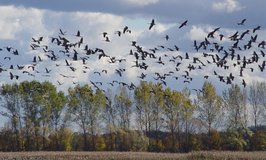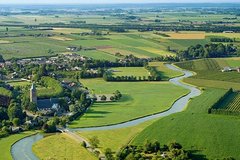VITAL
Viable InTensification of Agricultural production through sustainable Landscape transition (VITAL)
Project abstract
Europe will face increasing pressure on agricultural systems due to increasing global food demands, competing claims on land resources and decreasing possibilities to displace production outside Europe. Increasing demands from society for a range of ecosystem services and biodiversity protection call for transitions towards intensive agricultural systems that have minimal detrimental environmental effects. As a response to these major societal challenges, sustainable intensification (SI) is gaining attention. SI cannot be implemented through a generic, single development pathway for all agricultural systems. Alternative trajectories and actions to achieve SI depend on the local and contextual agronomic, environmental and socio-economic conditions. The project VITAL explores transition processes of European agricultural systems towards sustainably intensified production. VITAL identifies how differences in agricultural systems, their spatial frameworks and the role of actors, lead to, or inhibit, alternate transition processes of SI. The feasibility of different SI pathways is upscaled across Europe, hence moving beyond the level of individual farms and regions. Suitable spatial configurations of SI across land use systems are identified, accounting for the landscape and regional context.
Methods and materials
VITAL combines spatial and empirical analysis with participatory research. In four case study areas, we identify drivers, triggers and constraints for SI using social network analysis, surveys, and spatial analysis of landscape structure and functioning. These analyses are in the end upscaled to European scale. Throughout the project, the stakeholder community in the four case study areas is closely involved – from defining the exact scope of sustainable intensification to defining and upscaling the relevant pathways towards sustainable intensification.




Target groups
- Insights from network analyses, empirical data (survey), and statistics can empower Farmers in entering innovation pathways.
- Regional stakeholders and decision makers will primarily utilize new knowledge and methods for cooperation and networking at the territorial level.
- Policy makers at national and EU level will gain knowledge on the spatial dimension of SI systems for food and biomass production and valorization.
- Science will derive a holistic and validated approach and analytical framework to target sustainable intensification research that bring together the rural development, agronomic, geographic and ecosystem disciplines.
Expected results
- Analytical framework that describes feasible future states of sustainable intensification
- Assessment tools and indicators for sustainable intensification goals
- Identification and description of pathways towards sustainable intensification
- Priority maps of potentials for SI across Europe, including quantification of impacts outside Europe
- Insights into drivers, triggers, constraints, motivations and pathways from a farm-level perspective as well as in the role of social networks of transition
- Recommendations and policy briefs addressing different demands and levels of stakeholders
Research gaps
- Evidence on sustainable intensification is scattered and focused on crop yields, and a selected set easy-to-measure externalities.
- Operationalization of sustainable intensification is challenging:
- Varied environmental context
- Lack of reliable indicators for sustainable intensification
- Lack of insight in the role of societal context in adoption and feasibility
- How to move from multifunctional land use to multifunctional land systems architecture?
